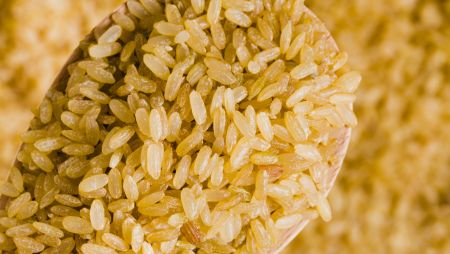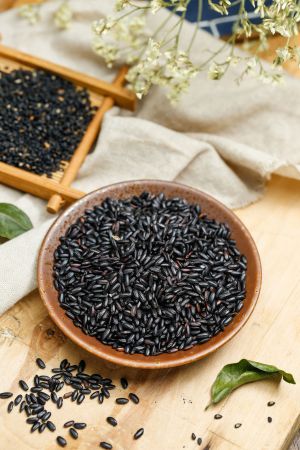Basmati Rice
Basmati rice is a long-grain aromatic rice variety traditionally grown in the Himalayan region of India and Pakistan. Renowned for its distinctive nutty flavor, fragrant aroma, and fluffy texture when cooked, basmati is commonly used in a variety of dishes, including biryani and pilaf. It is characterized by its slender grains that expand significantly in length during cooking. Basmati rice is not only a staple in South Asian cuisine but also appreciated globally for its unique culinary qualities and health benefits, as it is lower in glycemic index and high in fiber.
₹ 2,850.00
₹3,000
(Inclusive of all taxes)
-

No Warranty
-

COD Avilable
-

Returnable
-

Non cancelable
About this item
Basmati rice is a long-grain variety of aromatic rice, prized for its distinct flavor, fragrance, and fluffy texture when cooked. Originating from the Indian subcontinent, particularly the regions of India and Pakistan, Basmati rice has been cultivated for centuries, with its name derived from the Sanskrit word "Vasmati," meaning "fragrant" or "full of aroma."
Characteristics of Basmati rice include:
1. **Aroma and Flavor**: Basmati rice is renowned for its nutty flavor and floral aroma, which intensifies when cooked. The unique scent is attributed to a compound called 2-acetyl-1-pyrroline, which is present in higher concentrations in Basmati compared to other rice varieties.
2. **Texture**: When cooked, Basmati grains remain separate and fluffy, making it an excellent choice for pilafs, biryanis, and other rice dishes. The grains are typically longer than other types of rice, often measuring up to 9 millimeters in length.
3. **Nutritional Value**: Basmati rice is a good source of carbohydrates and provides a modest amount of protein. It is often considered a healthier choice compared to other rice varieties due to its lower glycemic index, making it suitable for those managing blood sugar levels.
4. **Varieties**: There are several types of Basmati rice, including white and brown varieties. Brown Basmati retains the bran and germ, offering more fiber and nutrients compared to its white counterpart.
5. **Culinary Uses**: Basmati rice is commonly used in South Asian cuisine and is a staple for dishes such as biryani, pulao, and as a side for curries. It can also be used in salads, soups, and pilafs in various international culinary traditions.
6. **Geographical Indication**: Basmati rice has been granted Geographical Indication (GI) status, which recognizes that its unique qualities are closely tied to specific regions, primarily in India and Pakistan.
Due to its rich heritage and qualities, Basmati rice is highly sought after worldwide, making it a staple in kitchens around the globe.
Basmati rice is a long-grain variety of aromatic rice, prized for its distinct flavor, fragrance, and fluffy texture when cooked. Originating from the Indian subcontinent, particularly the regions of India and Pakistan, Basmati rice has been cultivated for centuries, with its name derived from the Sanskrit word "Vasmati," meaning "fragrant" or "full of aroma."
Characteristics of Basmati rice include:
1. **Aroma and Flavor**: Basmati rice is renowned for its nutty flavor and floral aroma, which intensifies when cooked. The unique scent is attributed to a compound called 2-acetyl-1-pyrroline, which is present in higher concentrations in Basmati compared to other rice varieties.
2. **Texture**: When cooked, Basmati grains remain separate and fluffy, making it an excellent choice for pilafs, biryanis, and other rice dishes. The grains are typically longer than other types of rice, often measuring up to 9 millimeters in length.
3. **Nutritional Value**: Basmati rice is a good source of carbohydrates and provides a modest amount of protein. It is often considered a healthier choice compared to other rice varieties due to its lower glycemic index, making it suitable for those managing blood sugar levels.
4. **Varieties**: There are several types of Basmati rice, including white and brown varieties. Brown Basmati retains the bran and germ, offering more fiber and nutrients compared to its white counterpart.
5. **Culinary Uses**: Basmati rice is commonly used in South Asian cuisine and is a staple for dishes such as biryani, pulao, and as a side for curries. It can also be used in salads, soups, and pilafs in various international culinary traditions.
6. **Geographical Indication**: Basmati rice has been granted Geographical Indication (GI) status, which recognizes that its unique qualities are closely tied to specific regions, primarily in India and Pakistan.
Due to its rich heritage and qualities, Basmati rice is highly sought after worldwide, making it a staple in kitchens around the globe.
0 Review Of Product Basmati Rice

.jpg)



.jpg)

.jpg)